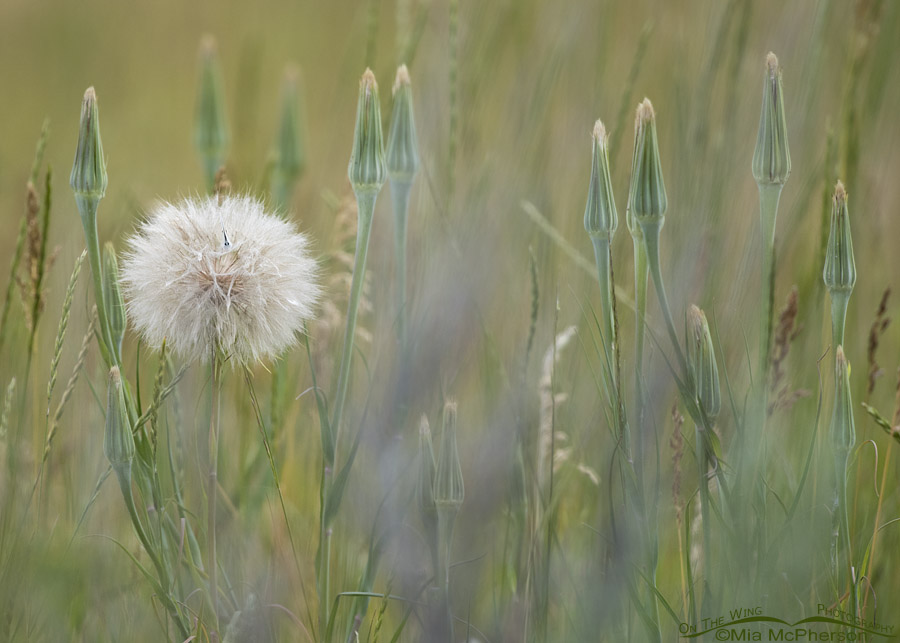 Western Goatsbeard Seedhead – Nikon D810, f6.3, 1/800, ISO 500, Nikkor 500mm VR with 1.4x TC, natural light
Western Goatsbeard Seedhead – Nikon D810, f6.3, 1/800, ISO 500, Nikkor 500mm VR with 1.4x TC, natural light
The scientific name is Tragopogon dubius but this forb has many common names including Yellow Salsify, Yellow Goatsbeard, Western Salsify, Wild Oysterplant and my favorite Western Goatsbeard. The flowers are yellow and dandelion-like but I am fond of the large, fluffy looking seedheads and try to photograph them when I can.
I photographed this one earlier this month in the Targhee National Forest in Clark County, Idaho while looking for active nesting cavities of sapsuckers, flickers, swallows and wrens. The light was horrible but I liked how perfect the seedhead looked and took a few photos any way. It wasn’t until I was back home in Utah and viewed this image on my large monitor that I noticed a tiny butterfly looking right at me. Can you see it?
Western Goatsbeard is nonnative and was introduced to North America as a garden plant in the early 1900’s. I’m not generally fond of introduced plants as a whole but this species is consumed by sage-grouse, sharp-tailed grouse, dusky grouse and many songbird species and has become an important food source for juvenile grouse.
The seeds spread much like dandelions do… by catching a breeze and floating through the air.
I also think the nearly 4 inch seedheads are delicate looking and pretty.
Life is good.
Mia
Click here to see more of my flower, shrub and tree photos.


Beautifully photographed.
Hi! We had this plant in Michigan, but do not know what we called it? Love mom
Smiling here. Love it – and Patty’s comment.
Hi, Ellie Baby…:-) PC
I love your plant, flower, and landscape pictures…this is a beauty. The seed head, with its upraised “hands” reminds me of myself turned bankrobber…unfortunately nabbed!!! I have the same hairdo….I wonder what would happen if anyone blew on my head……..
Lovely photo, I take a lot of flower photos and am often surprised. Okay when the critter is in focus but it sure messes up the photo when they’re not. We have T. dubius here in the Ozarks, it has a beautiful seed head unfortunately it is an introduced species.
Beautiful photo, Mia While introduced, certainly beneficial to our feathered friends.